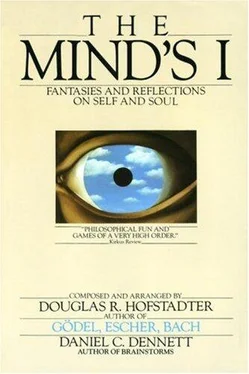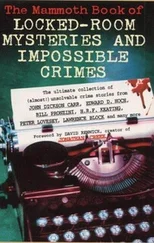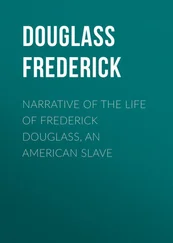But other things were probably not equal, and another property of a replicator variety which must have had even more importance in spreading it through the population was speed of replication, or “fecundity.” If replicator molecules of type A make copies of themselves on average once a week while those of type B make copies of themselves once an hour, it is not difficult to see that pretty soon type A molecules are going to be far outnumbered, even if they “live” much longer than B molecules. There would therefore probably have been an “evolutionary trend” towards higher “fecundity” of molecules in the soup. A third characteristic of replicator molecules which would have been positively selected is accuracy of replication. If molecules of type X and type Y last the same length of time and replicate at the same rate, but X makes a mistake on average every tenth replication while Y makes a mistake only every hundredth replication, Y will obviously become more numerous. The X contingent in the population loses not only the errant “children” themselves, but also all their descendants, actual or potential.
If you already know something about evolution, you may find something slightly paradoxical about the last point. Can we reconcile the idea that copying errors are an essential prerequisite for evolution to occur, with the statement that natural selection favors high copying-fidelity? The answer is that although evolution may seem, in some vague sense, a “good thing,” especially since we are the product of it, nothing actually “wants” to evolve. Evolution is something that happens, willy-nilly, in spite of all the efforts of the replicators (and nowadays of the genes) to prevent it happening. Jacques Monod made this point very well in his Herbert Spencer lecture, after wryly remarking: “Another curious aspect of the theory of evolution is that everybody thinks he understands it!”
To return to the primeval soup, it must have become populated by stable varieties of molecule: stable in that either the individual molecules lasted a long time, or they replicated rapidly, or they replicated accurately. Evolutionary trends toward these three kinds of stability took place in the following sense: If you had sampled the soup at two different times, the later sample would have contained a higher proportion of varieties with high longevity/fecundity/copying-fidelity. This is essentially what a biologist means by evolution when he is speaking of living creatures, and the mechanism is the same-natural selection.
Should we then call the original replicator molecules “living”? Who cares? I might say to you “Darwin was the greatest man who has ever lived,” and you might say, “No, Newton was,” but I hope we would not prolong the argument. The point is that no conclusion of substance would be affected whichever way our argument was resolved. The facts of the lives and achievements of Newton and Darwin remain totally unchanged whether we label them “great” or not. Similarly, the story of the replicator molecules probably happened something like the way I am telling it, regardless of whether we choose to call them “living.” Human suffering has been caused because too many of us cannot grasp that words are only tools for our use, and that the mere presence in the dictionary of a word like “living” does not mean it necessarily has to refer to something definite in the real world. Whether we call the early replicators living or not, they were the ancestors of life; they were our founding fathers.
The next important link in the argument, one which Darwin himself laid stress on (although he was talking about animals and plants, not molecules) is competition. The primeval soup was not capable of supporting an infinite number of replicator molecules. For one thing, the earth’s size is finite, but other limiting factors must also have been important. In our picture of the replicator acting as a template or mold, we supposed it to be bathed in a soup rich in the small building block molecules necessary to make copies. But when the replicators became numerous, building blocks must have been used up at such a rate that they became a scarce and precious resource. Different varieties or strains of replicator must have competed for them. We have considered the factors which would have increased the numbers of favored kinds of replicator. We can now see that less-favored varieties must actually have become less numerous because of competition, and ultimately many of their lines must have gone extinct. There was a struggle for existence among replicator varieties. They did not know they were struggling, or worry about it; the struggle was conducted without any hard feelings, indeed without feelings of any kind. But they were struggling, in the sense that any miscopying which resulted in a new higher level of stability, or a new way of reducing the stability of rivals, was automatically preserved and multiplied. The process of improvement was cumulative. Ways of increasing stability and of decreasing rivals’ stability became more elaborate and more efficient. Some of them may even have “discovered” how to break up molecules of rival varieties chemically, and to use the building blocks so released for making their own copies. These proto-carnivores simultaneously obtained food and removed competing rivals. Other replicators perhaps discovered how to protect themselves, either chemically or by building a physical wall of protein around themselves. This may have been how the first living cells appeared. Replicators began not merely to exist, but to construct for themselves containers, vehicles for their continued existence. The replicators which survived were the ones which built survival machines for themselves to live in. The first survival machines probably consisted of nothing more than a protective coat. But making a living got steadily harder as new rivals arose with better and more effective survival machines. Survival machines got bigger and more elaborate, and the process was cumulative and progressive.
Was there to be any end to the gradual improvement in the techniques and artifices used by the replicators to ensure their own continuance in the world? There would be plenty of time for improvement. What weird engines of self-preservation would the millennia bring forth? Four thousand million years on, what was to be the fate of the ancient replicators? They did not die out, for they are past masters of the survival arts. But do not look for them floating loose in the sea; they gave up that cavalier freedom long ago. Now they swarm in huge colonies, safe inside gigantic lumbering robots, sealed off from the outside world, communicating with it by tortuous indirect routes, manipulating it by remote control. They are in you and in me; they created us, body and mind; and their preservation is the ultimate rationale for our existence. They have come a long way, those replicators. Now they go by the name of genes, and we are their survival machines.
* * *
Once upon a time, natural selection consisted of the differential survival of replicators floating free in the primeval soup. Now natural selection favors replicators which are good at building survival machines, genes which are skilled in the art of controlling embryonic development. In this, the replicators are no more conscious or purposeful than they ever were. The same old processes of automatic selection between rival molecules by reason of their longevity, fecundity, and copying-fidelity, still go on as blindly and as inevitably as they did in the far-off days. Genes have no foresight. They do not plan ahead. Genes just are, some genes more so than others, and that is all there is to it. But the qualities which determine a gene’s longevity and fecundity are not so simple as they were. Not by a long way.
Читать дальше











